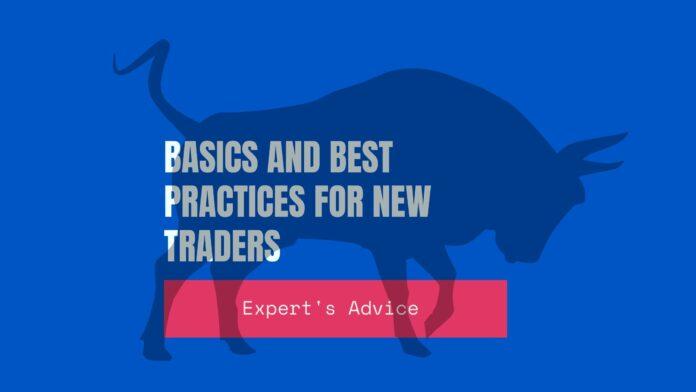So, you have finally decided to start trading. But, did you know that most new traders quit because they do not know how to manage a portfolio and end up with losses?
Many new traders incur heavy losses during their early days and start thinking of it as a gamble. They get so demotivated that they never open their trading account again.
However, you can reduce risks, avert losses, and maintain a great portfolio with hedging.
What Is Hedging?
Imagine someone buys a property against a certain sum of money, believing that it will fetch a profitable price in the long run. However, one day, they find that the property was set ablaze by a mob.
Now, they regret buying the house that they recently bought, whose valuation just sunk to the floor. They could have saved their hard-earned money had they insured the property.
Hedging works similarly but for the financial market. The goal of hedging is to keep you covered from market instability, price shifts, growth decline, currency devaluation, and more.
It helps you reduce the losses so that you can trade safer. For more security, many traders also invest through Stock api.
The best thing about hedging is that it is a tried and tested universal technique. You can use it to cover losses in equity, forex, commodities, interest rates, and derivatives.
In essence, hedging is a balancing technique that looks at the entire portfolio instead of balancing a single loss.
Different Types Of Hedging
There are two primary means of hedging.
Forwards, Futures, And Options
They are contracts that allow or compel you to purchase at a predetermined price. Thus, due to a fixed price, there is no fluctuation.
Money Markets
It covers a broader range and can range from leading, borrowing, buying, and selling assets, ranging from bonds, securities, stocks, commodities, debt, and equity markets.
Terms You Need To Know Before Understanding Hedging With Options
Options
In the financial market, options allow you to form a contract in which you have the choice to buy or sell at a later date at a set price. The set date is known as an expiry date.
Some companies allow you to perform the transaction at any time before the expiry date, whereas many do not.
Strike Price And Spot Price
It is the predetermined price, according to the contract, that you need to undergo in futures and options trading. The spot price represents the current price of the underlying asset.
The strike can be more, less, or equal to the spot price, which helps during hedging.
Call And Put
A call is when you have a strike price for buying at a rate mentioned in your contract. According to your agreement, a call is when you have a strike price for selling at a predetermined price, and put is the opposite.
Premium
The amount that you make through selling your contract is known as the premium. It may be in the money or out of money.
In-The-Money And Out-Of-Money
In-the-money means when, at the moment, if you execute your call or put option, you will earn money.
If the strike price of a contract is below the spot price in a ‘Call’ option, it is known as In-the-Money. In the case of a ‘Put’ option, it is the opposite.
Hedging Strategies
There are two ways investors trade in the financial market. They either invest in options and futures or try some portfolio management by balancing trade through buying or selling assets.
Let us look at a few popular and easy methods of hedging strategies for beginners.
1. Keeping The Cash
Sometimes, the best investment is choosing to stay away from the market. When the market is uncertain, you may want to play it safe and forego investment.
Although not technically a trading strategy, it is still a way to hedge your money from unforeseen circumstances. Over time, however, the money will devalue slightly due to inflation. Hence, it is not a foolproof plan.
2. Diversification
Instead of putting all your money into equity stock, you can diversify your portfolio by investing in alternative assets.
These include hedge funds, property, bonds, and commodities. These assets can shelter you during a market crash when all equities fall and can even increase profits.
3. Short-Selling
When a stock is going down, you can sell it first and then repurchase it. You can also sell a futures contract, which is cheaper and prevents you from getting into volatile equities.
The same is also applicable for currency pairs in the forex market.
4. Buying Inverse Returns
Even if you don’t have a futures and options account, you can still profit from an adverse crisis such as a market crash.
Inverse return stocks like ETFs rise when the market goes down. Hence, even when tough times approach, you can still turn your losers into winners.
5. Long Put
A long put is a strategy that gives you an option to sell your assets at a predefined price. It is one of the simplest means of using options for hedging with your long position portfolio on the asset.
Since you can choose the strike price value, you can opt for it if it is profitable. Alternatively, you can also exit the option and attempt selling it at a higher price.
You can accompany long position trade returns with a long put for hedging. For example, let us consider that you have bought shares at $300 in a long position.
Now, the prices of shares have decreased to $250. However, if you have a long put option of selling the shares at $330, you can use the option to counter your losses via the option to sell at $330.
6. Collar
The collar strategy involves three variables instead of two, as in the case of the long put.
In this options hedging technique, you can back a long position by an out of the money put option in the long position and an out of the money call option in the short position.
Let us say you bought an asset in the long position for $500. You have a call option of $550 with a $20 premium and a put price of $450 with a similar premium.
The price has fallen to $470, and you are worried it may fall even more.
- Once you sell the asset at $470, you incur a $30 loss from the long position.
- Now, you sell your contracts and make $20 each from the premium.
- Thus, at the end of the trade, you come out $10 richer ($20+$20-$30).
As a beginner, these methods work well on a free trading account. As you extend to more advanced levels, you can start using more complex hedging methods or combine these methods according to your needs.
Conclusion
It is important to learn to hedge since it limits your losses, counters the market flow, and cushions you from market collapse.
Conversely, you can try algorithmic trading to keep an eye on the momentum and price shifts and respond quickly to adverse scenarios.
















